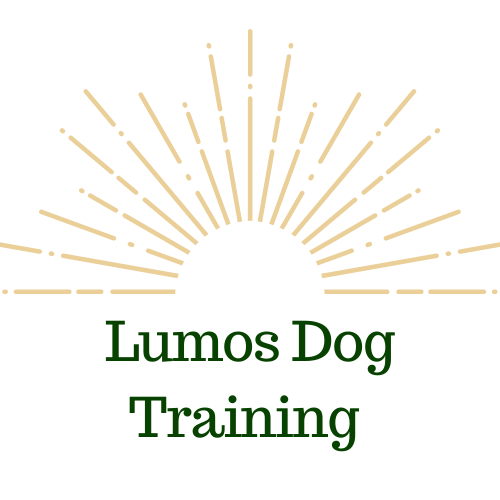Life with Dogs and Kids: How to Keep Interactions Safe
Teaching kids to be safe around dogs is essential to being a dog guardian and parent. Understanding how to keep your kid safe around dogs and vice versa will help foster long-lasting relationships if you have children or they’re just visitors to your home.
My niece frequently visits my home, and I currently have a dog that adores spending time with kids, but he’s also 120 pounds. My previous dog, Lola, didn’t care for being around children, and my dog Caroline often got excited by kids. Learning to teach them to safely interact with my niece as she’s been growing up has been essential for her safety and my dogs’ wellbeing.
Supervise Dogs and Kids When They Are Together
You’ve probably heard this more than enough; supervision is always needed when children are interacting with dogs. This means an adult should actively watch the child and dog interacting.
But you need to know how your dog communicates with you to understand if the interaction is going well.
Understand Your Dog’s Body Language
Before a dog gets to growling, snapping, and biting; they often give cues with their body language and behavior that they’re uncomfortable. We’ve all read horror stories regarding a dog snapping at a small child and injuring them when the dog was “perfectly fine” with the child right before that.
Learning your dog’s body language can inform you about your dog’s comfort in the situation so you can give them breaks, remove them from the interaction, or ensure they’re having a good time.
Avoidance Behaviors Many dogs will turn their head or shift their body away from someone or something when they aren’t enjoying the interaction. Some dogs also excessively lick at the person or child’s face to create more space between them. If you notice these from your dog, ask the kid to play with you in a different activity and allow the dog to move away.
Lip Licking and Tongue Flicking This is a subtle stress signal that dogs might offer. We commonly see it during interactions like hugging, kissing, and personal space invasion.
Yawning is Another subtle calming signal to communicate that the dog needs space or a break from the interaction.
Half-Moon or Whale Eye This body language is seen when a dog is uncomfortable. The dog might freeze their body or head and then turn their eyes away from the interaction.
Other body language that might communicate discomfort:
Turning away
Tight, closed mouth
Shaking off
Lifting their front paw to shift away
Excessive scratching
Lowered body
Tense or furrowed face
Focus on the Result, Not the Intent: Safe Dog and Child Interactions
Children aren’t intending to make a dog uncomfortable or stressed with their interactions. They are communicating and interacting the way they would with other people and kids. Children, especially toddlers, don’t have the mental and emotional development to understand how they should interact with dogs. There needs to be supervision and an adult to help keep the child and dog safe.
Hugging, kissing, and being close are seen as affectionate with other people, but to dogs, this can be invasive and lead to discomfort.
Instead of showing affection and engaging the way they would with people, show children how to interact safely with your dog! Focus on activities kids and dogs can enjoy together. Many dogs are incredibly tolerant and put into situations they aren’t enjoying. Let’s change that!
Pet, pet, pause is a great way to show children how to wait for the dog to continue the interaction. Show them to gently pet twice and then pause to see if the dog initiates more touch. If the dog moves away, that’s clear information they do not want to continue the interaction.
Teach your child to practice hand targeting with your dog! This is an excellent way for kids to get involved with training, and it’s an opportunity for engagement. This can also help prevent jumping with excited dogs, too.
Reading or quiet time together is a great way to show kids that when they’re calm and peaceful, the dog most likely will be, too. Set up a cozy mat or bed for the dog and set one up for your kid, too, so they both have their own space to relax near each other.
Ask for help with caring for the dog! Preparing enrichment and meals is a great way to have fun and teach your kids how to be invested in the dog’s wellbeing. Letting your kids create their recipes for frozen enrichment is always fun.
Sniff and decompression walks are great ways for kids and dogs to interact and spend time together. When my niece is on walks with my dogs and me, we talk about why Basil stops to sniff and tries to guess what he smells.
Playtime like fetch, tug, hide and seek, and flirt poles are great ways for kids to play with dogs without roughhousing or playing games that involve chasing. Some dogs get too excited when playing with kids screaming, running, or wrestling with little kids. You can ask your kid to hide treats around a room for the dog to come and find.
When To Seek Professional Help
If your dog frequently shows stressed or uncomfortable body language, hiring a professional dog trainer can help create positive associations with kids. If you are unsure if your dog is safe or comfortable around your kids, or you’ve seen aggressive behavior like growling, snapping, or biting, please hire a professional dog trainer. With kids involved, even a warning snap can be dangerous. Hiring a professional dog trainer can help create positive associations with kids if your dog is frequently showing stressed or uncomfortable body language. Contact us here if you need support with online or in-person training.

